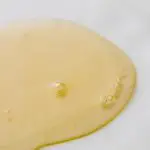Wondering whether super glue or super glue gel is the superior adhesive? You're not alone. Both have their strengths and weaknesses, and understanding the differences can help you make an informed decision.
Bonding strength, ease of application, drying time, versatility, resistance to moisture, gap-filling ability, longevity, shelf life, safety, and handling are all important factors to consider.
In this comparison, we'll delve into the details and help you navigate the nuances of these popular adhesives. Whether you're a seasoned DIY enthusiast or a professional craftsman, knowing which product best suits your needs can make all the difference in your projects.
Key Takeaways
- Super glue gel offers enhanced control and precision during application.
- Super glue gel has a quick drying time and minimizes the risk of run-off.
- Super glue gel is versatile and can bond a variety of materials, fill gaps, and adhere to irregular surfaces effectively.
- Super glue gel has a longer shelf life and maintains bonding strength for a more extended period compared to regular super glue.
Bonding Strength
When choosing between super glue and super glue gel, consider the bonding strength of each product before making your decision.
Super glue is known for its strong bonding precision, making it an excellent choice for small, delicate items that require precise application. Its adhesive durability is well-suited for materials such as metal, rubber, and plastic, creating a long-lasting bond.
On the other hand, super glue gel offers a thicker consistency, which can be advantageous for vertical applications and porous materials. This gel formula provides enhanced control during application, reducing the risk of drips or runs, and allowing for more accurate placement when bonding uneven surfaces.
While both options offer high bonding strength, the choice between super glue and super glue gel ultimately depends on the specific requirements of your project. Assess the materials being bonded, the application method needed, and the environmental conditions the bond will be subjected to in order to determine which product best suits your needs.
Application Ease
For easy application, super glue gel provides a user-friendly experience, allowing precise placement with reduced risk of drips or runs. The gel consistency of super glue gel makes it easier to control, ensuring precision application even in delicate or intricate bonding tasks. Additionally, its quick setting nature means you spend less time holding materials together, making the application process more efficient.
- Controlled Application: The gel's thicker consistency allows for more controlled and precise application, making it ideal for small or detailed projects.
- Reduced Drips and Runs: With its gel formulation, super glue gel minimizes the risk of drips and runs, resulting in a cleaner application process and reducing the likelihood of accidental spills.
- Efficient Bonding: The quick setting nature of super glue gel means that once applied, the bonding process is expedited, saving you time and ensuring a strong bond in a matter of seconds.
These features make super glue gel a preferred choice for those seeking a user-friendly and efficient experience when it comes to precise and quick adhesive applications.
Drying Time
The super glue gel's quick drying time makes it a convenient choice for efficient bonding, allowing you to complete your projects in a matter of seconds. This rapid drying time is particularly beneficial for precise applications and vertical surfaces. Unlike traditional super glue, the gel form minimizes the risk of run-off, ensuring application precision and reducing the likelihood of accidental spills or mess. When working on projects that involve intricate or delicate pieces, the ability to bond quickly and accurately can make a significant difference in the overall outcome.
Furthermore, the fast-drying nature of super glue gel also has a positive impact on the material finish. It reduces the risk of accidental smudging or smearing that can occur when using standard super glue. Additionally, its thicker consistency makes it easier to control, preventing unintentional damage to the materials being bonded.
Moreover, the ease of cleanup associated with super glue gel is another advantage, as any excess gel can be swiftly removed without leaving noticeable residue or marks. This makes the overall application process more efficient and less time-consuming, allowing you to focus on the quality and precision of your work.
Versatility
You'll find that super glue gel offers a wider range of applications and greater flexibility compared to traditional super glue.
When it comes to versatility, super glue gel outshines its counterpart in various ways:
- Vertical Surfaces: Super glue gel's thicker consistency allows it to stay in place on vertical surfaces without dripping, making it ideal for tasks such as securing trim and molding.
- Porous Materials: Unlike traditional super glue, super glue gel is better at bonding porous materials like wood, leather, and fabric, making it a versatile choice for crafting and repairs.
- Gaps and Irregular Surfaces: The gel's viscosity enables it to fill gaps and adhere to irregular surfaces more effectively than regular super glue, providing a stronger and more reliable bond in challenging applications.
When comparing versatility, it's clear that super glue gel's ability to adhere to various materials, fill gaps, and work on vertical surfaces makes it a superior choice for a wide range of applications.
Whether you're working on crafts, repairs, or DIY projects, the versatility of super glue gel can offer greater flexibility and reliability in different scenarios.
Resistance to Moisture
When it comes to the resistance to moisture, both super glue and super glue gel have their own strengths.
Super glue gel is often preferred for use on damp surfaces, as it tends to hold up better in such conditions.
On the other hand, super glue is better suited for dry surfaces, where it forms a strong and durable bond.
Understanding the specific properties of each type can help you choose the right adhesive for your project.
Gel for Damp Surfaces
When working on damp surfaces, super glue gel provides better resistance to moisture compared to regular super glue. The gel application allows for a more controlled and precise dispensing, making it easier to apply on damp surfaces without compromising the bond strength.
The viscosity of the gel also helps it to stay in place, preventing it from being washed away by the moisture before it sets. Additionally, super glue gel is formulated to withstand a certain level of moisture during the bonding process, ensuring a reliable and durable bond even in less than ideal conditions.
This makes it an ideal choice for projects that involve bonding materials in environments where moisture can't be completely avoided.
Super Glue for Dry
To achieve strong bonding in dry conditions with resistance to moisture, opt for the regular super glue. Regular super glue is designed to provide a fast and reliable bond on dry surfaces, making it an excellent choice for projects where moisture resistance is a priority. It typically has a quick drying time, allowing you to work efficiently, and it offers excellent surface compatibility with a wide range of materials.
| Attributes | Regular Super Glue |
|---|---|
| Drying Time | Fast |
| Surface Compatibility | Wide range of materials |
| Moisture Resistance | High |
Regular super glue is a dependable option for situations where a strong and moisture-resistant bond is required. Its ability to bond quickly and work effectively across various surfaces makes it a valuable adhesive for your projects.
Gap Filling Ability
For filling wider gaps, super glue gel is the better option than regular super glue. Super glue gel has a thicker consistency, allowing it to fill larger voids and bond uneven surfaces more effectively. The viscosity of super glue gel enables it to stay in place without running or dripping, making it ideal for vertical applications and porous materials. Additionally, the gel form provides a cushioning effect, which helps in creating a strong and durable bond even in substrates with minute imperfections.
The gap-filling capability of super glue gel makes it suitable for a wide range of repair and assembly tasks, from fixing broken ceramics to securing loose wood joints.
- Thicker Consistency: Super glue gel's dense nature allows it to fill wider gaps more effectively.
- Vertical Applications: The gel's non-drip formula makes it perfect for use on vertical surfaces.
- Cushioning Effect: The gel's ability to provide a cushioning effect aids in bonding uneven surfaces and filling minute imperfections.
When considering the gap-filling ability of adhesives, super glue gel is the superior choice due to its thicker consistency, non-drip formula, and cushioning effect, making it a versatile option for various bonding needs.
Longevity and Shelf Life
When comparing super glue and super glue gel, it's important to consider their longevity and shelf life.
Both products have different shelf lives and bonding strengths that can impact their effectiveness over time.
Understanding these factors can help you determine which type of adhesive is better suited for your specific needs and projects.
Shelf Life Comparison
How long will each product last once opened?
When comparing the shelf life of super glue and super glue gel, it's important to consider storage conditions and product formulation. Here's a comparison of their longevity:
- Shelf Life: Super glue typically has a shelf life of 12-24 months once opened, but this can vary based on factors such as exposure to air and moisture.
- Storage Conditions: Proper storage is crucial for extending the shelf life of both products. Store them in a cool, dry place, away from direct sunlight and extreme temperatures.
- Formulation: Super glue gel is designed to have a longer shelf life compared to regular super glue due to its thicker consistency, which helps prevent premature hardening.
Understanding the shelf life and storage requirements of these products can help you make an informed decision based on your specific needs and usage frequency.
Longevity of Bond
To ensure a lasting bond, it's essential to understand how the longevity and shelf life of super glue and super glue gel can impact the durability of your adhesive projects.
When comparing bonding durability, both super glue and super glue gel offer strong and long-lasting adhesion. However, the adhesive lifespan can vary based on the specific formulation and quality of the product.
Super glue gel tends to have a longer shelf life and can maintain its bonding strength for a more extended period compared to traditional super glue. Proper storage, such as keeping the adhesive in a cool, dry place and tightly sealing the container after use, can also contribute to maximizing the longevity of the bond.
Understanding the adhesive lifespan and taking appropriate storage measures can help ensure the durability of your bonded projects.
Safety and Handling
Before using super glue or super glue gel, ensure that you read and follow the safety instructions on the product label. To handle these adhesives properly, consider the following:
- Safety Precautions: Always work in a well-ventilated area to avoid inhaling the fumes. Keep the adhesive away from eyes, skin, and mouth. In case of contact, seek medical attention immediately.
- Proper Storage and Handling Techniques: Store the glue in a cool, dry place, and keep the lid tightly closed when not in use to prevent it from drying out. When handling the adhesive, use it in a controlled manner to avoid accidental spills or splashes.
- Protective Equipment: Consider using gloves to protect your skin from accidental contact with the glue. Additionally, wearing safety goggles can shield your eyes from potential splashes.
Frequently Asked Questions
Can Super Glue Be Used on Materials Like Fabric or Leather?
Yes, super glue can be used on materials like fabric or leather. It provides strong bonding strength and quick drying time. However, it may lack flexibility, so consider the application and the need for flexibility when choosing a glue type.
Is Super Glue Safe to Use on Skin in Case of Accidental Contact?
If you accidentally get super glue on your skin, safety precautions include washing the area with soap and water. Super glue's chemical composition can cause irritation, so seek medical advice if irritation persists.
What Is the Best Way to Remove Super Glue From Surfaces?
To remove super glue from surfaces, the best solvents are acetone or nail polish remover. You can also use heat methods like a hair dryer. Remember to test in a small, inconspicuous area first.
Can Super Glue Be Used for Outdoor Projects or Will It Break Down in the Elements?
Yes, super glue can be used for outdoor projects, it has excellent outdoor durability and adhesive strength. It will hold up well in the elements and provide a strong bond for your outdoor DIY projects.
Does Super Glue Have a Strong Odor or Fumes That Should Be Considered When Using It in Enclosed Spaces?
When using super glue, always consider ventilation for fumes. Apply in a well-ventilated area and take necessary precautions. Super glue fumes can be strong, so avoid using it in enclosed spaces without proper ventilation.
- Tetron Fabric for Marine Applications: Durability and Use Cases - June 18, 2025
- Tetron Fabric for Outdoor Furniture: Weather Resistance and Care - June 18, 2025
- Tetron Fabric for Wall Coverings: Style and Application Tips - June 18, 2025







